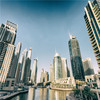A historic hotel, symbol of Bologna!
Marievi Xezonaki
I really like the old city of Bologna in Italy.
octavia_serenemorgenstern
Bologne
B.Me
Best Bologna
B.Me
al Żigànt - the Giant with a secret
salvalasilvia
Popular Trip Moments
MIXED facade Basilica di San Petronio | Bologna Giardini Margherita spacious green | Two Towers almost collide in Bologna | A historic hotel, symbol of Bologna! | I really like the old city of Bologna in Italy. | Bologne | Best Bologna | Sequoie music park | Pinacoteca Nazionale Bologna | al Żigànt - the Giant with a secret | Genki Sushi, great sushi place in Bologna
Popular Travel Types
Popular Destinations
Munich Travel | Peak District National Park Travel | Famagusta Travel | Derby Travel | Fukuoka Travel | Tacloban Travel | Madrid Travel | Colwyn Bay Travel | Nice Travel | Greenock Travel | Kathmandu Travel | Kota Kinabalu Travel | Reggio Calabria Travel | Ulaanbaatar Travel | Paignton Travel | Basel Travel | Central Macedonia Travel | Phu Quoc Island Travel | Can Pastilla Travel | Harrogate Travel | Wilyabrup Travel | Guantanamo Travel | Sequim Travel | North Berwick Travel | Bingham County Travel | Scharbeutz Travel | Connecticut Travel | Tywyn Travel | Slangerup Travel | Tremezzo Travel
Recommended Attractions at Popular Destinations
Bangkok attraction near me | Tokyo attraction near me | Manila attraction near me | Hong Kong attraction near me | Taipei attraction near me | Seoul attraction near me | Los Angeles attraction near me | New York attraction near me | Shanghai attraction near me | Kuala Lumpur attraction near me | Shenzhen attraction near me | Osaka attraction near me | Singapore attraction near me | Guangzhou attraction near me | London attraction near me | San Francisco attraction near me | Beijing attraction near me | Macau attraction near me | Bali attraction near me | Paris attraction near me | Ho Chi Minh City attraction near me | Orlando attraction near me | Jakarta attraction near me | Phuket attraction near me | Chicago attraction near me | Toronto attraction near me | Istanbul attraction near me | Cebu attraction near me | Dallas attraction near me | Seattle attraction near me
Popular Attractions
Sagrada Familia | Chao Phraya River | Hot Air Balloon Cappadocia | The Blue Mosque | Arc de Triomphe de l’Etoile | Stonehenge | Empire State Building | Xi 'an City Wall | Antalya | Tokyo Disneyland | London Transport Museum | Amsterdam Canal Cruises | Prince Kung's Palace Museum | Panda Valley | Ko Phi Phi Don | Eastney Beach | Wisata Kebon Jati Kubangkarang | Brightwater dr | Cardiff Castle Museum | Tượng Con Khỉ | Park | Kumbalangi KAVARU experience point | Brama główna ZOO | Jubilee Green | "Rayito" Park | Chakchak ovil | Hong Kong Disneyland | Nanxun Ancient Town | Canals of Amsterdam | Underwater World Pattaya
Popular Restaurants in Bologna
Il Posto | Antica Osteria Le Mura, Bologna | Trattoria Guglielmo | Parlor | Osaka Gusto Japan | A Casa Mia | Il Piatto Rotto | Afrodita Chef | La Porta Restaurant | Baracca e Burattini | Enoteca Dagli Ostinati | IL Santo Bevitore | Ristorante Casa Monica | Camera con Vista Bistrot | Hostaria San Carlino | Va Mo La | A Balus | La Terrazza | Doppio Malto | Manzo & Co | Villa Meraville | Mozzabella | Ciacco | La Sberla Bistrot | Rossopomodoro Bologna | La Taverna Di Roberto | Libra | Via Con Me | Posta | La Stella
Payment Methods
Our Partners
Copyright © 2024 Trip.com Travel Singapore Pte. Ltd. All rights reserved
Site Operator: Trip.com Travel Singapore Pte. Ltd.
Site Operator: Trip.com Travel Singapore Pte. Ltd.




















